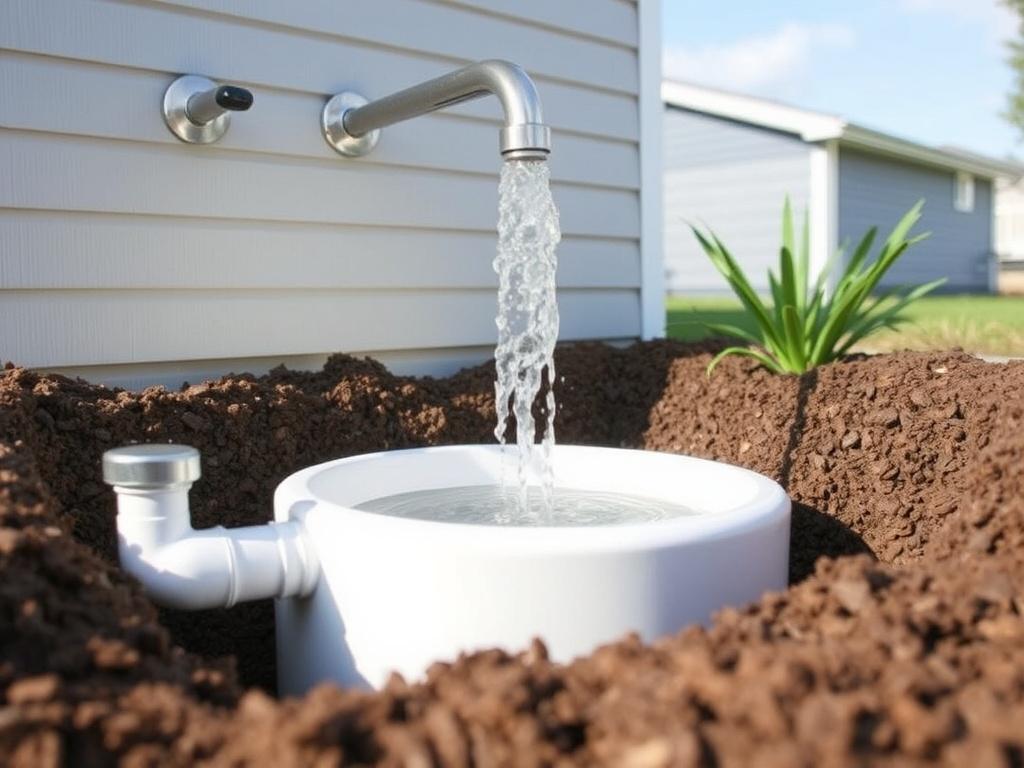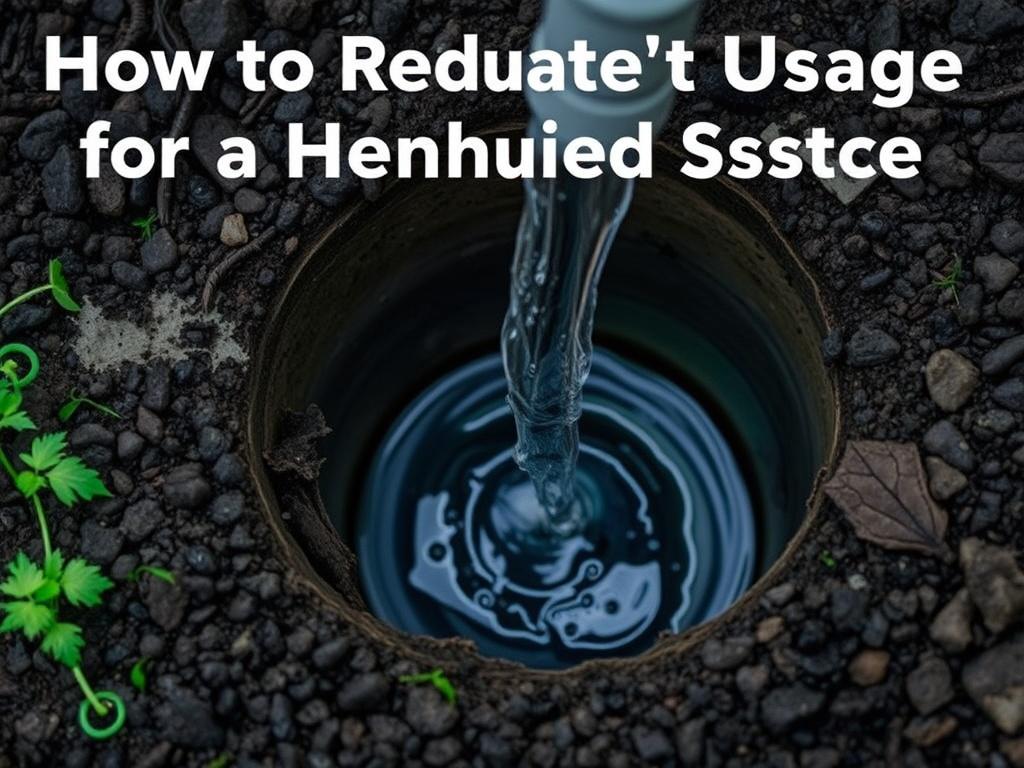Maintaining a healthy septic system is crucial for any home that relies on this form of wastewater treatment. One of the most effective ways to ensure your septic system functions properly and lasts longer is by reducing water usage. Excessive water overwhelms the system, leading to potential backups, costly repairs, and environmental hazards. But how exactly can you cut down water consumption without sacrificing everyday comfort? In this article, we’ll explore practical, easy-to-implement strategies that householders can adopt to reduce water usage for a healthier septic system. Through understanding the ins and outs of septic systems and smart water habits, you’ll be able to protect your investment and safeguard your property against septic failure.
- Understanding Your Septic System
- Why Reducing Water Usage Matters
- Common Household Habits That Increase Water Usage
- Practical Ways to Reduce Water Usage for a Healthy Septic System
- 1. Fix Leaks Promptly
- 2. Install Water-Efficient Fixtures
- 3. Spread Out Water Usage
- 4. Use Full Loads Only
- 5. Shorten Shower Time
- 6. Avoid Flushing Non-Biodegradable Items
- Additional Water-Saving Tips
- Monitoring Your Septic System’s Health
- How Much Water Should You Aim to Save?
- Conclusion
Understanding Your Septic System
Before diving into water-saving techniques, it’s important to grasp the basics of how a septic system works. Essentially, a septic system processes household wastewater by separating solids from liquids in a septic tank. The solids settle at the bottom, while the liquids flow into the drain field for natural filtration. This process relies on a balanced, slow flow of water through the system. When too much water is introduced at once, it can saturate the drain field, causing untreated waste to surface or back up into your home.
Septic systems aren’t designed to handle an overwhelming amount of water, so reducing water usage directly eases the burden placed on the system. This, in turn, helps prevent clogs and extends the life of the drain field, saving you from expensive repairs or replacements down the line.
Why Reducing Water Usage Matters

Using less water benefits your septic system in multiple ways. First, it prevents what is known as hydraulic overload, a condition where the septic tank and drain field get flooded with excess liquid. This reduces the system’s ability to treat wastewater effectively and can lead to harmful contaminants entering your yard or local groundwater.
Second, by minimizing water input, solids in the septic tank remain intact longer, allowing for proper digestion by naturally occurring bacteria. This decreases the frequency of pumping your tank and reduces operating costs.
Lastly, lower water consumption is environmentally friendly, conserving valuable freshwater resources and lowering your utility bills. It’s a win-win situation.
Common Household Habits That Increase Water Usage
To reduce water usage for a healthier septic system, it helps to identify where the most water goes in your home. The following table outlines typical household activities that consume significant water:
| Activity | Average Water Usage per Use | Potential Impact on Septic System |
|---|---|---|
| Toilet Flushing | 1.6 to 3.5 gallons | High volume; frequent flushes strain septic system |
| Showering | 2 to 5 gallons per minute | Continuous water flow increases wastewater volume |
| Washing Clothes | 15 to 45 gallons per load | Large water use in short time; spikes system load |
| Dishwashing (Manual) | 8 to 27 gallons | Significant usage; depends on tap control |
| Dishwasher | 6 to 16 gallons | Smaller cycles but repeated frequently |
| Leaky Faucets | Up to 3,000 gallons per year | Wastes water continuously, burdens septic system |
Understanding these everyday water usages will help you pinpoint areas to cut back and adopt more efficient habits.
Practical Ways to Reduce Water Usage for a Healthy Septic System
Reducing water usage doesn’t mean drastically changing your lifestyle—it’s about making smarter, more efficient choices. Below are key strategies to help lessen the water load on your septic system.
1. Fix Leaks Promptly
Leaking faucets, toilets, or pipes might seem minor, but they can waste thousands of gallons of water annually. A slow drip adds up over time, unduly stressing your septic system. Check all water fixtures regularly for leaks and repair them quickly. Making this small effort protects your system and conserves water.
2. Install Water-Efficient Fixtures
Modern water-saving fixtures can dramatically reduce water usage without compromising performance. Consider installing low-flow toilets, faucet aerators, and showerheads designed to reduce gallons per minute. For example, replacing a traditional toilet that uses 3.5 gallons per flush with a low-flow model that uses 1.6 gallons can cut your water use by more than half.
3. Spread Out Water Usage
Running multiple water-intensive appliances, like washing machines and dishwashers, all in one day can overload your septic system. Spread these activities out across the week to allow the system time to process wastewater effectively. This practice helps avoid sudden surges that can saturate the drain field.
4. Use Full Loads Only
Operate your washing machine and dishwasher only when they are fully loaded. Partial loads waste water and energy, increasing the volume entering your septic tank unnecessarily. Planning laundry and dishwashing around full loads can reduce the frequency of water input into the system.
5. Shorten Shower Time
Showers can use a lot of water quickly, especially if you enjoy long, hot showers. Reducing your shower time by even a couple of minutes can save gallons of water. Turning off the water while lathering or shampooing also cuts back water use dramatically.
6. Avoid Flushing Non-Biodegradable Items
While this doesn’t directly reduce water usage, preventing non-biodegradable items like wipes, diapers, or feminine products from entering your septic tank reduces clogs and backups that might force water use to increase in removal or maintenance. Flush only toilet paper and human waste.
Additional Water-Saving Tips
Besides the main actions listed above, there are other small changes that can collectively make a big impact. Here’s a handy list:
- Collect rainwater for watering plants instead of using tap water.
- Use a broom instead of a hose to clean driveways and sidewalks.
- Insulate your water pipes to get hot water faster, reducing wasting cold water.
- Turn off the tap while brushing your teeth or washing dishes by hand.
- Choose drought-tolerant plants for landscaping to reduce irrigation needs.
Implementing even a few of these habits can help you significantly reduce water intake and improve septic health.
Monitoring Your Septic System’s Health
Regularly monitoring the condition of your septic system complements your water-saving efforts. Keeping track of water usage and septic tank performance allows you to detect issues early. Here are some indicators that your system may need attention:
- Slow draining sinks, tubs, or toilets
- Gurgling sounds in plumbing fixtures
- Water pooling or strong odors near your drain field
- Backups in your home drains
- Bright green, spongy grass over the drain field
If you observe any of these signs, reducing water usage immediately will help, but contacting a septic professional for inspection and maintenance is essential. Additionally, regular pumping of your septic tank, typically every 3 to 5 years depending on usage, prevents solids buildup that water can’t wash away.
How Much Water Should You Aim to Save?

Setting a concrete water reduction goal helps motivate behavioral changes. The average American household uses about 80-100 gallons of water per person per day, while homes with septic systems should aim lower to avoid overloading their systems. Striving to reduce indoor water use by 20-30% is a good target for most households relying on septic treatment.
Here’s a table summarizing average water use per activity and realistic goals to reduce usage:
| Activity | Average Water Use | Target Reduction | Estimated Water Saved |
|---|---|---|---|
| Toilet Flush | 1.6 – 3.5 gallons per flush | Switch to 1.6 gallon low-flow models | Up to 3,000 gallons/year per person |
| Shower | 2-5 gallons per minute | Reduce shower time by 2-3 minutes | Up to 1,000 gallons/year |
| Washing Machine | 15-45 gallons/load | Use full loads only; high-efficiency machines | Up to 5,000 gallons/year |
| Leaks | Varies; up to 3,000 gallons/year for slow leaks | Fix all leaks immediately | Potentially thousands of gallons/year |
By making these changes, you not only safeguard your septic system but also contribute positively to water conservation efforts.
Conclusion

Reducing water usage is the single most impactful way to maintain a healthy septic system. By understanding how your septic system operates and where water consumption occurs in your household, you can take meaningful steps to avoid hydraulic overload and system failures. Whether it’s fixing leaks, installing water-efficient fixtures, or simply adopting better habits like using full loads and shortening showers, each action contributes to extending the life of your septic system while saving water and money. Regular monitoring and maintenance combined with smart water usage ensure that your septic system remains effective, protecting both your home environment and local groundwater. Making water conservation a routine part of your life not only benefits your septic system but also supports broader environmental sustainability—something every homeowner can feel good about.
Помогла вам статья?






